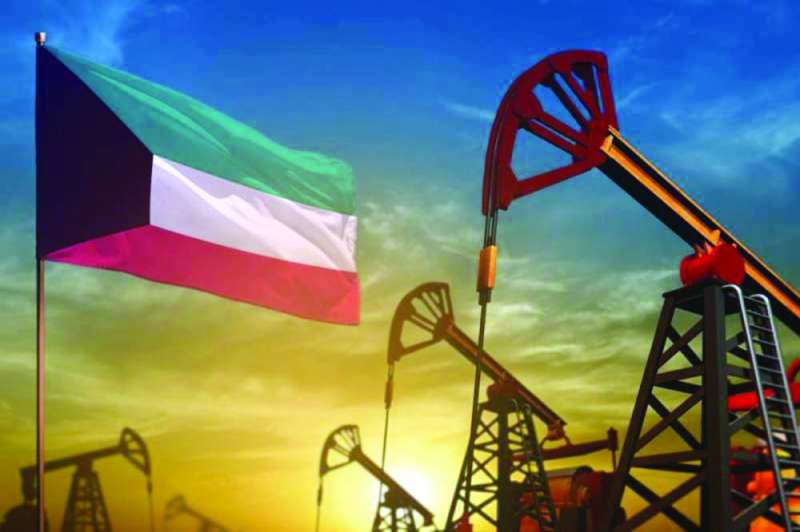With oil prices rising to $139 per barrel yesterday, Kuwait’s oil revenues is slated to grow. This will in turn reduce Kuwait’s general budget deficit, for the current fiscal year. The deficit is now estimated to be less than two billion Dinars. Earlier estimations pegged the deficit at over 12 billion Dinars.
The three scenarios proposed by a local Arabic daily, for oil prices, predicts that the budget may achieve a deficit ranging between 1.39 and 1.8 billion Dinars. This figure is 85 to 88.5 percent lower than the previous estimations . This can be attributed to the rising price of oil and the revenue it will generate.
The first scenario assumes that the average price of a barrel of Kuwaiti oil during the current month will reach $111.47. This will generate oil revenues around 77.8 million Dinars per day. This will total 2.41 billion Dinars during the month of March. The figure is reached by accounting the average sale of 2.3 million barrels per day including domestic consumption.
Oil revenues in February amounted to 1.841 Billion Dinars when the price per barrel was 94.2 dollars. The Scenario predicts that the total oil revenue of Kuwait during February and March, of the current year, will reach 4.25 billion Dinars.
According to the Ministry of Finance, the total oil revenue during the last ten months was around 12.844 billion Dinars. This brings the total oil revenue of Kuwait in the current fiscal year to 17.095 billion Dinars. This is 7.96 billion Dinars more than the previous estimates of 9.127 billion Dinars.
When considering both oil and non-oil (1.802 billion Dinars) revenues for the current fiscal year and assuming that government agencies will be able cut expenditure by 10 percent, from 23.048 to 20.7 billion Dinars. The budget will record a total deficit of about 1.8 billion Dinars.
The Second scenario assumes that the average price per barrel will only reach $120 in March. This will be the case if The United States and The European Union impose bans on Russian oil imports and delays are experienced in the return of Iranian crude to global markets. In this case, Kuwait will achieve about 2.6 billion Dinars in oil revenues in March. This scenario expects the oil revenue, for the entire fiscal year, to reach 17.285 billion Dinars. This amounts to 8.16 billion Dinars, or 89.4 percent of the budget estimate of 9.127 billion Dinars.
With the addition of the estimated non-oil revenues, the total revenues will amount to 19.087 billion. This puts the deficit at 1.6 billion Dinars, when accounting for the 10 percent reduction in Government expenditure.
The third Scenario is more optimistic and pegs the average piece of a Kuwaiti Oil per barrel at $130 in March. This will generate oil revenues of 2.82 billion Dinars in March. Using this figure the total oil revenue of Kuwait during the fiscal year is predicted to touch 17.505 billion Dinars this will bringing the deficit to 1.39 billion dinars.
Oil prices jumped yesterday, to their highest levels since 2008, as Brent crude reached $139.13 per barrel in the first few minutes of trading. West Texas Intermediate crude reached $130.50 per barrel. This is highest the prices have reached since July 2008. The numbers have created fears of an impending inflationary shock to the global economy.
Bank of America, Chief Economist, Ethan Harris, estimated that losing five million barrels of Russian oil in the market could double oil prices to $200 a barrel and slow global economic growth. JPMorgan Chase said Brent could end the year at $185 a barrel if Russian supply disruptions continue.
The Governor of Kuwait, at OPEC, Muhammad Al-Shatti, ruled out that Russian production could be compensated if Western sanctions included the Russian oil and gas sector. The sanctions may cause the market to suffer from a shortage of supplies.
Halima Croft, Head of Global Commodities and Strategy at RBC Capital Financial Services, said that the recent events will prompt countries to quickly obtain additional barrels of oil to fill the possible shortfall in Russian oil exports. This is amounted to be between three to four million barrels per day.
The price of gas in Europe rose to historic levels of $3,300 per 1,000 cubic meters. The price of natural gas has also reached an all-time high in the European markets while The United States and The European Union are discussing sanctions on Russian energy in the face of the invasion of Ukraine.
Fears of disruption to Russia’s exports, which accounts 40 percent of European gas imports, has caused a 60 percent rise in European electricity cost to 300 Euros per megawatt hour.
Gold has extended its gains from yesterday. The increased investor demand for safe-haven assets, like gold, is the result of the Russian invasion of Ukraine. The price crossed $2,000 per ounce in yesterday’s trading.
Gold prices also rose in the Spot market by one percent and reached $1,986.29 an ounce. This is the highest level since August 19, 2020 when it touched $2,000.69 an ounce early in the Asian session. Gold recorded $1,989.96 in the last bid of Spot trading.
Holdings of the largest gold-backed exchange-traded fund “SPDR Gold Trust” increased by 0.4 percent to 1,054.3 tonnes last Friday, the highest recorded since mid-March 2021. Other metals like Palladium also saw an increase in value by 5.6 percent to $3170.49 per ounce.

